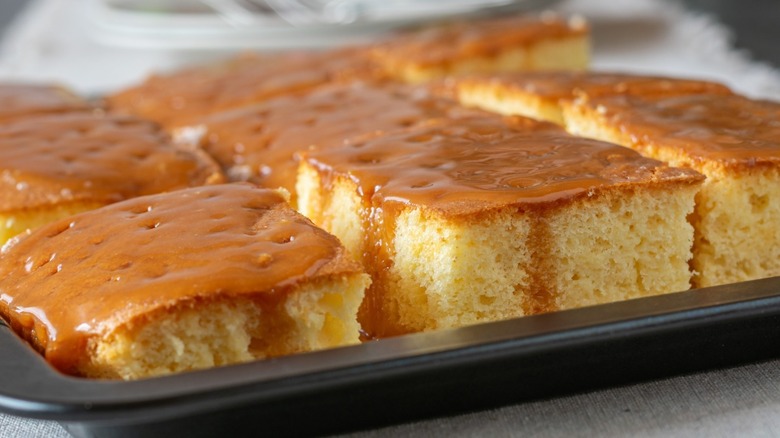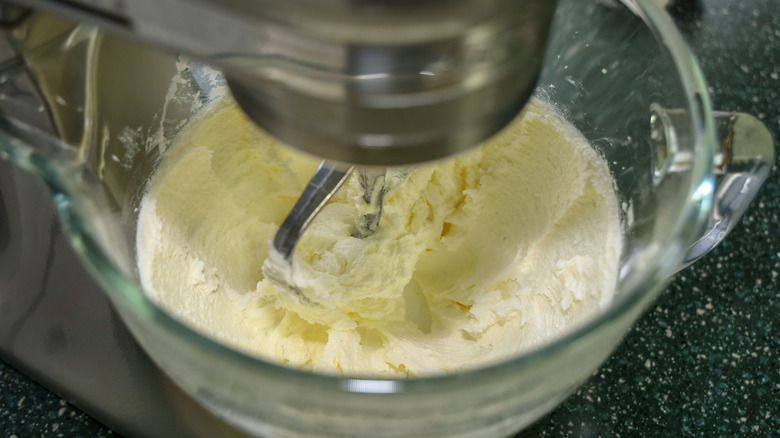The Quick Switch That Will Change The Way You Make Yellow Cake
Remember the good ol' days when we would eat the birthday cake that someone else had just blown on? Good times! Although some of us may not perform that ritual anymore, we still should enjoy a celebratory cake — and everyone has their favorite. For some, that might look like yellow cake with chocolate frosting, covered in rainbow sprinkles (you are never too old for sprinkles).
Many people's nostalgia for cake can be traced back to a boxed mix. Although convenient and consistent, boxed cake mixes can contain chemicals, trans fats, and loads of salt and sugar, unlike a homemade cake where you can control the ingredients (via Eat This, Not That).
Kitchn compared the results from a boxed cake mix and a homemade batter, examining the cost, preparation time, taste, and texture. Surprisingly, it took the same amount of time to prepare and bake each cake, although cleaning up may take longer with a from-scratch one. The cost difference was down to the pennies with $.19 per serving for a boxed mix versus $.32 for homemade. The big difference, however, was in taste and texture, not to mention the experience. Though there are hacks to make boxed cake mix taste homemade, many dessert lovers may agree that baking a cake from scratch is more fun (and rewarding). If you're ready to haul out the flour and butter for your own yellow cake recipe, one trick from a professional could really elevate your bake.
This trick is called reverse creaming
Usually, yellow cake recipes begin with creaming together room-temperature butter and sugar until the mixture is "light and fluffy," per Epicurious. This process can take a few minutes as the mixture becomes airy and lighter in color. The remaining ingredients follow, ending with dry ingredients like flour. Although these steps sound simple enough, improper mixing is often why your cake is dry, the publication explains. Not creaming the butter and sugar enough could give you a dense cake, while overmixing the batter could make it dry.
To avoid these results, Genevieve Yam of Epicurious tried baker Rose Levy Beranbaum's "reverse creaming" technique, outlined in her cookbook, "The Cake Bible." Beranbaum begins by mixing all the dry ingredients in a stand mixer, including sugar. Diced pieces of room temperature butter are added, beaten until the mixture resembles sand. The wet ingredients are thrown in last, minimizing the time they interact with the flour. According to Beranbaum, the butter acts like a force field coating the flour, preventing a gluten build-up and therefore a tough cake. The outcome is a tender, moist bake that's virtually impossible to mess up.
Many professionals approve of this method, which first appeared in a Betty Crocker cookbook but went mainstream thanks to Beranbaum, who was actually inspired to come up with the technique because of her love for the texture of boxed-mix cakes and the ways she wanted to improve them, says King Arthur Baking. Now, it's the go-to way for many bakers to whip up yellow cake and beyond.

